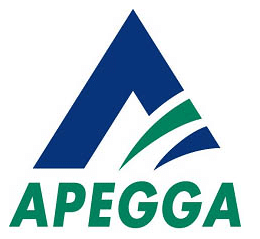Water contamination is at the heart of the fracking debate. Gas companies and their well-funded industry support groups (still) adamantly contend that ‘there are no proven instances of drinking water contamination due to fracking.’ But as Chris Mooney recently wrote about in the Scientific American, and as DeSmogBlog pointed out in our featured report Fracking the Future – this argument is based more on semantics and sly avoidance tactics than scientific evidence, or personal experience for that matter. But in Alberta the oil and gas industry’s ability to deny responsibility for instances of water contamination may be related to an even greater systemic flaw – one which leaves the final verdict in the hands of industry representatives.
In Alberta, landowners who suspect their water is contaminated by gas drilling activity are directed to contact Alberta Environment (
AENV), the provincial body that oversees the Water Act, and has just recently been renamed the
Ministry of Environment and Water “to emphasize the importance of protecting one of Alberta’s greatest resources.”
AENV responds to complaints in tandem with the province’s oil and gas regulator, the Energy Resources Conservation Board (
ERCB), previously the Energy and Utilities Board (
EUB). Upon the event of suspected water contamination,
ERCB provides
AENV with relevant information about the producing well, including which company it belongs to.
AENV then contacts the company who is directed to “
conduct an investigation or hydrogeology study, using a qualified professional.”
Indeed, when it comes to water issues related to the oil and gas industry, much of the province’s bidding is handled by
APEGGA members, who perform important regulatory tasks. Water allocation applications for companies performing enhanced recovery extraction, a term which overarches all unconventional projects from the tar sands to fracking, are
approved only by APEGGA certified professionals.
APEGGA members are also the only certified officials qualified to conduct
‘baseline’ water testing for fracking operations that harvest something called coalbed methane (
CBM). Even if actual tests are not conducted by
APEGGA professionals, for example if an in-training geologist or engineer does the field work, the data and results must pass through the hands of a full
APEGGA member.
APEGGA scientists have been
mandated since 2006 to perform baseline testing for
CBM gas extraction, after it became difficult to deny that shallow fracking operations of this kind
posed a serious threat to Alberta’s water. Baseline testing is used to record water quality before fracking begins and allows landowners, the government and gas companies to verify if water contamination has occurred as a result of gas drilling. Although government-mandated baseline water testing is about the only surefire way to protect landowners from fracked water, it is not required for any other type of fracking taking place across Alberta.
APEGGA officials determine in
CBM cases if post-frack test results demonstrate a health risk to water users. If so, they inform landowners who are responsible for notifying local health authorities on their own initiative. (See
AENV Baseline Water Well Testing Reporting Template.)
This means gas industry hydrogeologists, rather than doctors or toxicologists, determine if water is safe for human consumption. (We’d like to acknowledge DeSmogBlog commenter AnOilMan for drawing our attention to this).
In some instances companies have refused landowners’ requests to test for other fracking-related contaminants, even at the landowner’s expense. Further frustrating the process, the Alberta government has refused requests to mandate more comprehensive baseline testing for CBM wells and to extend baseline testing to all forms of unconventional gas extraction.
The way baseline and post-frack water testing is conducted in Alberta makes it easy for the gas industry to claim that what they find in the water – like methane, the only thing they test for – is naturally occurring and unrelated to fracking.
Landowners have the option of monitoring their own water or hiring independent experts to collect data, although individuals who complain about government standards or decide to lam it risk being red-flagged as non-cooperators. A Strathmore, Alberta landowner,
Bill Barrett, requested extra samples be taken on his property to test for barium and strontium.* Encana representatives refused his request and threatened to submit a blank form on his behalf, which is an official signal to the government that a landowner refused to comply with water testing procedures.
If the overlap of APEGGA and government roles isn’t enough to make the stoic landowner raise an eyebrow, perhaps the additional overlap of APEGGA and industry roles will. Given their broad reach in both energy and water issues, APEGGA scientists may find themselves in some contradictory appointments, where for example these ‘qualified professionals’ have a vested interests in keeping industry mishaps like water contamination on the down low.
It might come as no surprise that
APEGGA has landed itself in some
hot water over climate denial. Just take a look through
2010’s Reader’s Forum in The PEG, the
APEGGA‘s member publication. They’ve also recently taken the impotent stance of advancing “
climate change adaptation” because that is something
APEGGA members “
can actually do something about,” neatly sidestepping the issue altogether. This is a troubling position for Alberta’s engineers, geologists and geophysicists to take – the same professionals behind a powerful oil and gas industry that pollutes both water and the atmosphere.
All of which points to this greater concern: why
AENV and the
ERCB tolerate such an unseemly overlap between industry invested science and science (ostensibly) in the name of public health and water protection. Perhaps by using the
APEGGA as a middleman,
AENV and
ERCB hope to keep the messy business of water contamination at arms length.
But by fostering such close ties with industry interests, the Alberta government is failing in its duty to protect the interests of its people and give independent scientists the opportunity to intercede on behalf of the victims of water contamination.
* Correction: This post originally stated that Bill Barrett was from Rosebud, Alberta.






